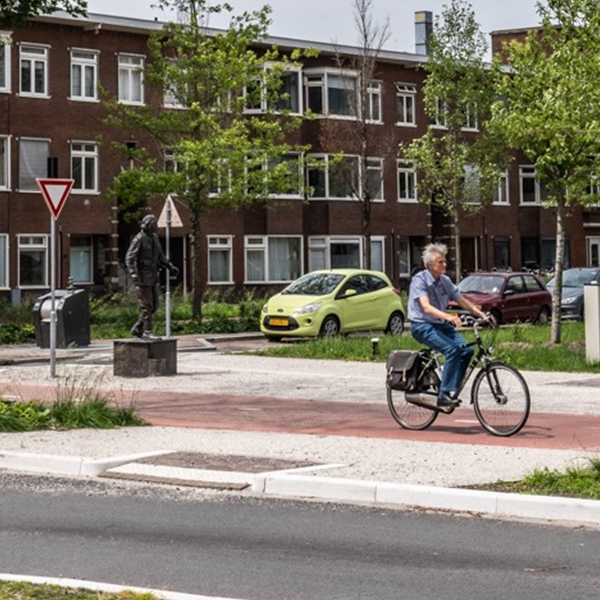Green mobility
Together on the path to STOMP

Green mobility
Increasingly more provinces and municipalities are proactively getting involved in the mobility transition. This has seen the traditional pyramid become inverted, with walking, cycling and public transport now the most important mobility modes. Last year, Witteveen+Bos further increased its role in this process through policy and strategic advice, designs, project and stakeholder management, and works supervision.
In prioritising sustainable mobility in area development, a frequently employed principle is STOMP. In Dutch, this stands for walking, cycling, public transport, Mobility as a Service (an integrated platform for various forms of shared mobility), and private cars. The principle states that, in area development, cars should be seen as guests and infrastructure should be explicitly designed to accommodate pedestrians and cyclists. This is the reverse of traditional thinking. In applying it, we almost always incorporate two other, general principles: urban greenery and climate resilience, both of which stem from designing with nature.
In practice, STOMP means replacing car parks with natural green areas and spaces for recreation; designing narrower roads to leave more room for walking and cycling paths; and stimulating residents to be more active, with all the short- and long-term health benefits that entails.

Digital tools
Successfully implementing green mobility begins with clear objectives, a thorough understanding of feasibility obtained via policy and strategic advice in the form of accessibility studies, exploratory studies, planning studies, and route analyses (high-quality public transport, train and road transport), and the development of traffic and mobility solutions.
In our work on sustainable mobility issues, we almost always combine the power of big data and AI to arrive at customised solutions. Digital tools such as the Pedestrian Traffic Monitor and the Bicycle Traffic Monitor help us combine and analyse data to produce in-depth insights and forecasts that help optimise walking and cycling infrastructure in provinces, regions, cities and neighbourhoods.

Impact on liveability
In the design phase, too, ideal opportunities exist to achieve long-term gains by integrating the STOMP principle. Our urban designers and (landscape) architects regularly combine the focus on pedestrians and cyclists – and cars as guests – with opportunities for going green, stimulating urban nature, and enhancing climate adaptation. This integrated approach maximises our positive impact on liveability.

In recent decades, the Netherlands has become accustomed to car-based mobility, with car users often able to park their prized possessions right outside their front doors. But in line with the STOMP principle, municipalities now assign cars the lowest priority. For residents, this priority is often still considerably higher. Inevitably, therefore, the path to green mobility involves a certain amount of friction.
Residents’ evenings
An essential element of reversing traditional thinking is community support. That is why we explicitly incorporate stakeholder management in the form of one or more engagement and stakeholder managers.
These managers are responsible, for example, for organising residents’ evenings at which residents can share their wishes as well as their knowledge. Such evenings are in line with the Environment and Planning Act, which highly prioritises participation, and are just one of the initiatives we use to achieve balance in designs together with clients and stakeholders – balance between liveability and green mobility on the one hand and a parking space at an acceptable distance from the front door on the other. This desire for a convenient parking space encapsulates the clash between immediate comfort and a liveable future city that is at the centre of the mobility transition – a task as challenging as it is enjoyable.
More information?




